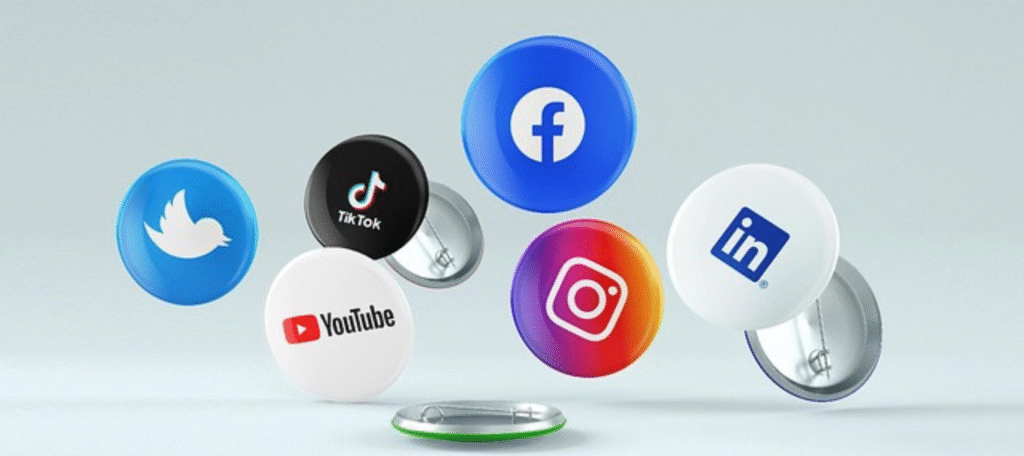Brands are losing out on an important digital avenue for consumer interaction if they don’t take advantage of social media marketing’s reach and influence. Particularly considering that, according to Hootsuite’s 2025 Social Trends Report, 96% of marketers concur that social media yields favorable results.
In addition to interaction, companies can benefit from improved lead generation, and a well-executed social media strategy can raise conversion rates, increase website traffic, and improve search rankings. However, when you are unsure of which channels to use, how can you create a successful social media strategy? Determining if your company has to have a presence on Facebook, Instagram, LinkedIn, or TikTok can be overwhelming given the abundance of possibilities. Additionally, there are other social media sites like Threads and BlueSky to take into account!
We’ve outlined a straightforward, step-by-step procedure below that will assist you in choosing your social media networks and in making the best choice possible based on the most crucial elements.
What goals do you have for your social media strategy?
It is crucial to be able to connect your social media accounts to the overarching goals of your strategy. You probably shouldn’t use a certain channel if you can’t articulate how or why it would assist you in reaching your objectives. To assist you in determining your goals, let’s examine some important social media objectives.
1) Raise brand awareness
Choosing reputable platforms with a sizable audience should be your initial course of action since it will enable you to reach a variety of potential customers. If you are aware of your buyer personas, it is also worthwhile to consider both mainstream and specialist platforms. Paid promotion is one of the best ways to increase brand recognition and reach (this is a good choice, regardless of your budget). Therefore, spend some time investigating your possibilities for social media advertising. For instance, Facebook’s advertising platform is well known for producing remarkable returns on investment.

2) Increase the production of leads
One of the most important tools for marketers trying to produce quality leads is social media. You may draw in suitable leads with targeted marketing that can be developed further in your funnel to increase conversions. 76% of social media users claim that social media, including advertisements, influencer content, brand postings, etc., contribute to their purchasing decisions.
3) Increase website traffic
Both sponsored and organic social media posts can be used to increase website, landing page, or blog clicks. You can identify precisely which posts or social media content are performing well and gain insight into the subjects and perspectives that your audience finds appealing by utilizing UTMs to track traffic.
4) Increase audience participation
For marketing teams, one of the main goals of social media is to engage customers and prospects. Posting content that encourages likes, comments, shares, and saves will help you achieve this. Additionally, you can leverage tools like polls and live streaming to provide customers a means to communicate in real time and receive genuine solutions to their problems.
5) Establish a community
Nowadays, a lot of firms use social media to create a community. This can be accomplished on the home page or by creating private groups that allow users to access both the brand and other users. Communities provide a genuine means for consumers to interact with businesses. They can also foster brand champions and encourage the sharing of positive material and even testimonies.

Which channels are being used by your target audience?
You must take into account where your audience is interacting online after you have matched your objectives with the social media channels you have chosen. For example, if ladies in their 70s make up the majority of your clientele, then maintaining an Instagram account might be pointless. Similarly, if your target audience is limited to men, there might not be a strong case for using Pinterest to promote your content. Demographics inform the tightest and most successful social media campaigns. Your strategy and the channels you select will be able to provide the most relevant, focused approach possible thanks to these data-driven insights, which will raise your conversion rates.
Social listening can assist you in evaluating your present following. Gender, age, and geographical information for your existing social audiences will be provided by this, assisting you in determining which channels are worthwhile and which are not. The Pew Research Center has done a study that lists the main demographics for a number of social media platforms in case you haven’t decided on any yet or if you want to branch out into uncharted territory.
Frequently Asked Questions
1. Why is it important to choose the right social media platform for my business?
Choosing the right platform ensures you reach your target audience effectively, make the most of your marketing budget, and generate better engagement and conversions.
2. Should my business be on every social media platform?
Not necessarily. It’s better to focus on 2–3 platforms where your target audience is most active rather than spreading yourself too thin.
3. Which social media platforms are best for B2B businesses?
LinkedIn is the top platform for B2B, followed by Twitter and Facebook, depending on your industry and goals.
4. Which platforms are ideal for B2C businesses?
Instagram, Facebook, and TikTok are great for B2C because they allow strong visual content and customer interaction.

